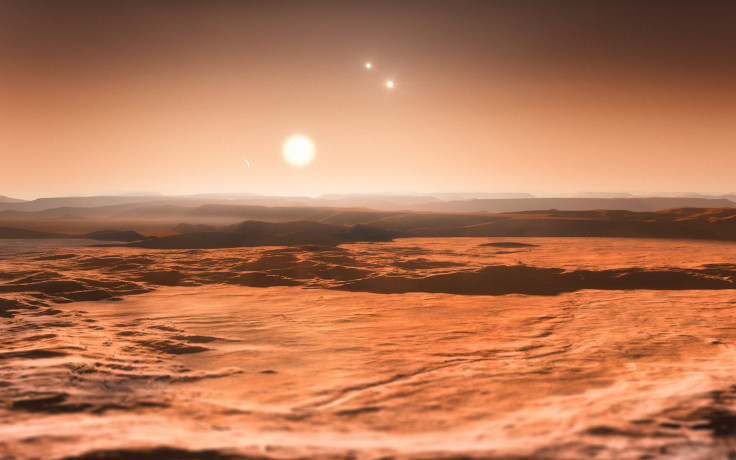Three Habitable Planets Found Orbiting Nearby Star Gliese 667C 22 Light Years Away

Astronomers have found three new planets that may be capable of supporting alien life orbiting the nearby star Gliese 667C. Not only does Gliese 667C have three "super-Earth" habitable planets, but it’s also much closer than many other solar systems with planets in the habitable zone.
According to the European Southern Observatory's announcement, the three planets exist inside Gliese 667C’s habitable zone, the region that is neither too hot nor too cold to sustain liquid water, meaning that the planets may be capable of supporting alien life. As super-Earths, the Gliese 667C planets are all larger than Earth, but smaller than Neptune. The findings are set to be published in the journal Astronomy & Astrophysics.
Gliese 667C is a star with only about a third of our sun’s mass, with five to seven planets orbiting it, including the three habitable super-Earths, Space.com reports. Because Gliese 667C is part of a three-star system, any life forms that exist on the habitable planets may be able to see three suns at once when they look up to the sky. Due to the star's small size, its habitable zone is very close to the star itself, unlike our sun, which supports life much farther out.
Most importantly, though, is that Gliese 667C is extremely close to Earth, by space standards. The star is located about 22 light years away, inside the constellation Scorpius. That distance, 132 trillion miles, might seem a long way, but on an astronomical scale, Gliese 667C and Earth are practically next-door neighbors. It’s still a long time before we would be able to send any probes towards the star or its planets, but if that technology ever comes, this means that Gliese 667C may be the first place we attempt to either colonize or greet alien life.
In order to find Gliese 667C and its three habitable planets, the astronomers pooled data from several high-powered telescopes around the world, utilizing a technique called radial velocity. The researchers studied the slight gravitational effects that the planets produced as they revolved around Gliese 667C and determined their characteristics from there.
"We identified three strong signals in the star before, but it was possible that smaller planets were hidden in the data," Guillem Anglada-Escudé, leader of the study and professor at the University of Göttingen in Germany, said in a statement to the ESO. "We re-examined the existing data, added some new observations, and applied two different data analysis methods especially designed to deal with multi-planet signal detection."
"Both methods yielded the same answer: There are five very secure signals and up to seven low-mass planets in short-period orbits around the star."
© Copyright IBTimes 2024. All rights reserved.





















